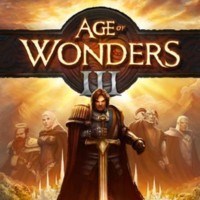Age of Wonders 3: The basic information about the game
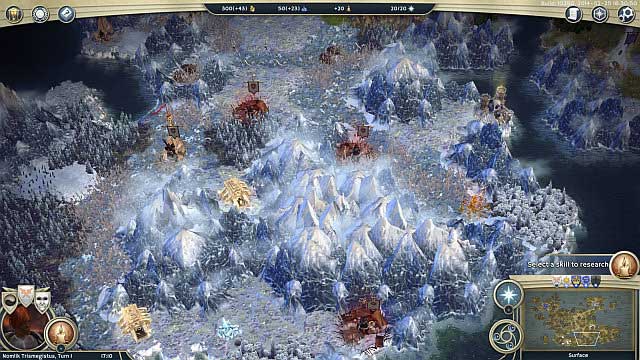
In Age of Wonders III you will take the control of a leader, who is going to lead the Empire from the very beginning, until the glorious end. Your task will be to expand cities, ensure the appropriate supply of resources and map exploration. Above all, however, you will have to train various units, to learn spells and to fight exciting battles. And all of this in the magical fantasy world. This is the basic bits of knowledge that you need to start the game.
Turn-based strategy
Age of Wonders III is a turn-based strategy. This means that each players has a definite amount of time and limited action points, which can be spent on performing an action during his turn. And so, during your turn, you can start training your army, move the leaders around the map or start the siege of an enemy city. After you have done your move, you need to end the turn and wait for the opponent to make his move. There are two types of turns in the game: classical and simultaneous. During the classical turns, the players make their moves consecutively and, in the case of the simultaneous ones, as the name suggests, the players make their moves at the same time.
Hexes
Both the strategic and the battle map have been divided into six-side fields, called hexes. Moving around both of the maps consists in moving between the neighboring hexagons. Each single hex can be adjacent to 6 other ones and, on each one of them, there can be an army (consisting of a maximum of 6 units) or one unit (on the battle map). All of the units on the neighboring hexes, in case of an attacks, join in the battle, as a reinforcement (so, a battle can be participated by the maximum of 6 armies, which gives 42 units).
Heroes
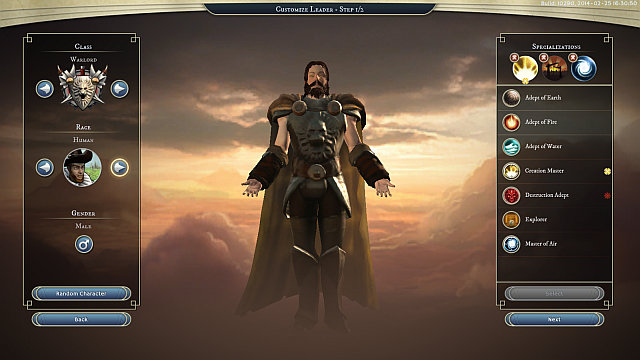
Your leader and the minor leaders are the most important units in the game. They are usually the strongest ones, who have the most health points, can carry items and upgrade their skills. Depending on the selected race and class, at the beginning, there are various units spells and research directions available. After he is defeated, your leader respawns after several turns have passed, in your Throne City. Losing both the leader and the Throne City results in losing the game.
Resources
Resources are the propelling factor of your Empire. They are necessary for unit production, development of cities and for casting of spells. In the game, there are 5 main types of resources. You can obtain them by means of exploration of the map, bartering with the other players or plundering the enemy cities. Additionally, your own cities produce a specific amount of each.
Gold - the most important material for production of new units and development of cities. Additionally, aside from production, each unit requires a certain amount of material for upkeep.
Mana - material used mainly for casting spells and creating items. Just like in the case of units, some spells require a specific amount of this material, per turn.
Production points - each city has a specific amount of production points, which determine how fast a unit is recruited or a building built. The way it works is this: if you have 50 production points, and you want to manufacture a unit that requires 150 of gold, then this will take 3 turns.
Knowledge points - these points are necessary to conduct research. Each research requires a specific number of these points, whose amount can be increased with, e.g. appropriate buildings.
Population - the final resource that determines how fast your cities grow. Per each level, you need a defined number of people and, the increase in population can be ensured by expanding the city and erecting appropriate buildings. The higher the increase, the faster the city grows and the wider area it encompasses.
Races and classes
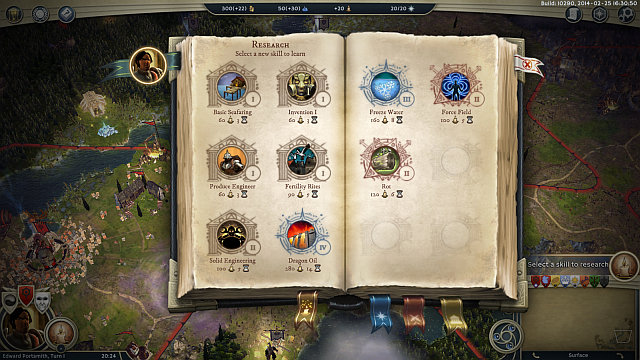
In the game, there are several types of races and classes. Depending on the selection, your city and units will be of a different kind, at first. The race selection also influences the kind of terrain, over which your cities will sprawl. The class selection, on the other hand, determines, mainly, the available research, spells and unique units, different for each race.
Available races: Draconian, Dwarf, Goblin, High Elf, Human and Orc.
Available classes: Arch Druid, Dreadnought, Rogue, Sorcerer, Theocrat, Warlord.
Diplomacy
If, during the game, you encounter another player (his army or city) you will unlock the option of diplomatic talks with the leader. Depending on the relations with the other player, you will be receiving various statuses:
Unknown - the status before meeting another player.
Neutral - after you encounter the other player, you receive this status automatically. You can then start making forwarding your propositions, e.g. barter.
Peace - you have decided not fight against the other player. If you want to attack the other player, you need to break off the peace. You cannot, then, attack until the next turn.
Alliance -If the appropriate option is on, it is possible for an alliance to be victorious, after all other players, who do not belong to the alliance, are eliminated. The allied armies can reinforce each other in battles and, additionally, the map will be revealed above the cities and armies of the allied player.
At War - while at war, you can easily attack the opponent's armies and cities. You need to be careful, though, because he will probably respond in kind.
Starting a new game
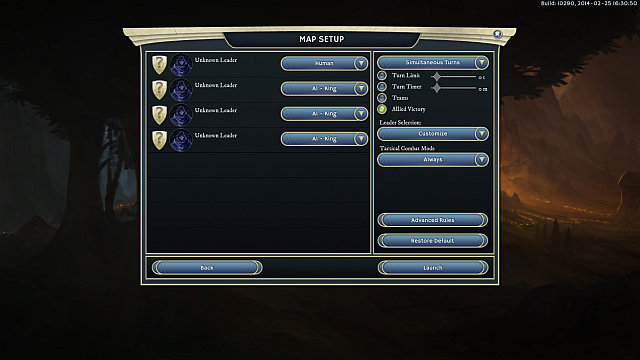
To start a new game, you need to select the New Random Map option. On the starting screen, you can select: the number of players, difficulty level for the AI-controlled ones, the map's size, its type and flow of the game (defines the number of initial cities or units). By selecting the Advanced option, you can additionally define if you want the map to be two-level (Surface + Underground) and allow for the creation of own leaders, or not (Allow custom leaders). In the Game flow tab, you can additionally set options, such as, the size of the city and of the starting army, the distance between players or affluence of the map in treasures, cities dwellings. In the Geography tab, you can determine the terrain type that is to be prevalent throughout the map.
In the next window, you can define the number of human players and the level of the AI-controlled players. The extra element is the limits that you can set on the number of turns, on time per turn and the selection of starting units or allowing alliance victory. You can also define if tactical battles are to be played always, or only in the case of battles between human players. In the advanced options, you can define the starting level of resources and of the already completed researches. Additionally, you can define the maximum number and level of heroes. The last options to define are: map exploration (the map is revealed at the very beginning) and the ability to start cities (if the tab is unmarked, then you will only be able to restore the cities that you have conquered). The final element, before you start the game, is the selection of the hero or, if proper option is marked, creation of a new one.
You are not permitted to copy any image, text or info from this page. This site is not associated with and/or endorsed by the developers and the publishers. All logos and images are copyrighted by their respective owners.
Copyright © 2000 - 2025 Webedia Polska SA for gamepressure.com, unofficial game guides, walkthroughs, secrets, game tips, maps & strategies for top games.
